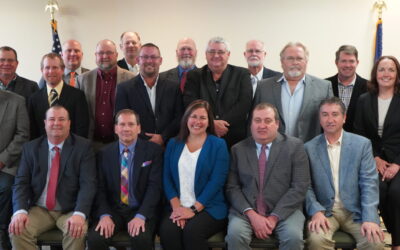Soy Takes Flight: 2023 ends with encouraging news from the transportation sector
By Blair Shipp
American Soybean Association
Ending the year on a good note was the U.S. Department of the Treasury, who issued comprehensive guidance on the Sustainable Aviation Fuel (SAF) Credit, delivering positive news for the soybean industry. Released on Dec. 15, this guidance offers a clear pathway for incorporating soy and other plant-based feedstocks into the expanding sustainable aviation fuel sector, presenting exciting opportunities for industry stakeholders.

The ongoing discussions around the Argonne National Laboratory (ANL)-GREET model, a key factor in determining SAF Credit eligibility, have garnered attention. While the ANL-GREET model received endorsements from ASA and industry stakeholders, the Environmental Protection Agency (EPA) identified its limitations in meeting Clean Air Act parameters for greenhouse gas emissions.
As a response, collaborative efforts are in progress to develop a new GREET methodology by March 1, including a comprehensive evaluation involving Climate-Smart Agriculture Practices.
A pivotal acknowledgment from the EPA is that the methodology used for the Renewable Fuel Standard Program aligns with necessary standards. This acknowledgment led the Treasury to specify that SAF qualifying as biomass-based diesel or advanced biofuel under the Renewable Fuel Standard (RFS) will enjoy a 50 percent reduction in greenhouse gas emissions for the SAF Credit.
This regulatory recognition is particularly beneficial for soy-based SAF, making it eligible for an attractive $1.25 per gallon rate. Once the new GREET methodology is finalized, soy-based SAF may be eligible for a higher tax credit.
Clean Fuel Production Credit
The tax credit, with retroactive applicability from Jan. 1, 2023, through Dec. 31, 2024, smoothly transitions thereafter to the Clean Fuel Production Credit (45Z), an additional provision established under the Inflation Reduction Act. This development gains significance as renewable diesel, a unique fuel from regular biodiesel, demand has grown significantly during the past couple of years. Renewable diesel, meeting the ASTM standard for diesel fuel and blendable up to 100 percent with regular diesel, is gaining prominence and is increasingly using soybean oil as a feedstock.
SAF production costs more than biodiesel or renewable diesel production. The new credit allows the fuel for air travel to gain an additional 25 cents beyond the Blenders Tax Credit. Renewable diesel, biodiesel and SAF made from soybean oil are all eligible for the $1 BTC, but SAF can only claim the BTC or SAF credit – not both. Comparing these biofuels reveals variations in production processes, costs, and feedstock requirements. While renewable diesel plants display adaptability to produce some SAF, biodiesel plants lack this versatility. Notably, producing a gallon of SAF requires more raw materials than biodiesel or renewable diesel, hence the higher costs.
All these biofuels, including biodiesel, renewable diesel and SAF, qualify for different state and federal programs such as the Renewable Fuel Standard (RFS) and California’s Low Carbon Fuel Standard (LCFS). However, the treatment of feedstocks within these programs adds a layer of complexity.
The escalating demand for renewable diesel has reshaped the soybean market dynamics, with soybean oil at times constituting about half of a soybean’s overall value. This shift has cascading effects on soybean prices and the broader soybean industry.
The recent guidance from the Treasury on the SAF Credit, coupled with the acknowledgment of soy-based SAF within established programs, opens promising avenues for soybean farmers. Beyond its immediate impact on soybean prices, this development solidifies soybeans as a pivotal raw material in the evolving landscape of sustainable aviation fuels and renewable diesel. Industry professionals are encouraged to thoroughly assess the strategic implications arising from these regulatory changes.
Rail update – as of early January
After a five-day suspension in late December, U.S. Customs and Border Protection resumed operations at the international railway crossing bridges in Eagle Pass and El Paso, Texas. These critical rail arteries, essential for shipping grain into Mexico, were temporarily closed to redirect CBP resources for efficiently processing an influx of migrants entering the U.S. at these points.
The agency, while prioritizing border security, is adapting plans, deploying resources, and working toward maintaining efficient trade and travel operations. The two crossings, and additional crossings as needed, will remain open for longer hours to help alleviate the backlog of rail commerce.
This development follows the advocacy of the Ag Transportation Working Group, of which ASA is a member, urging the U.S. Department of Homeland Security to reopen these critical grain shipment routes.
These routes constitute 45 percent of all rail cars moving to and from Mexico. According to the U.S. Soybean Export Council, approximately 70 percent of soybeans exported to Mexico rely on rail transportation. On average, the U.S. exports about 110,000 metric tons of soybeans and 33,100 metric tons of soybean meal per week to Mexico.
Posted: January 13, 2024
Category: Indiana Corn and Soybean Post - January 2024, ISA, Membership and Policy




